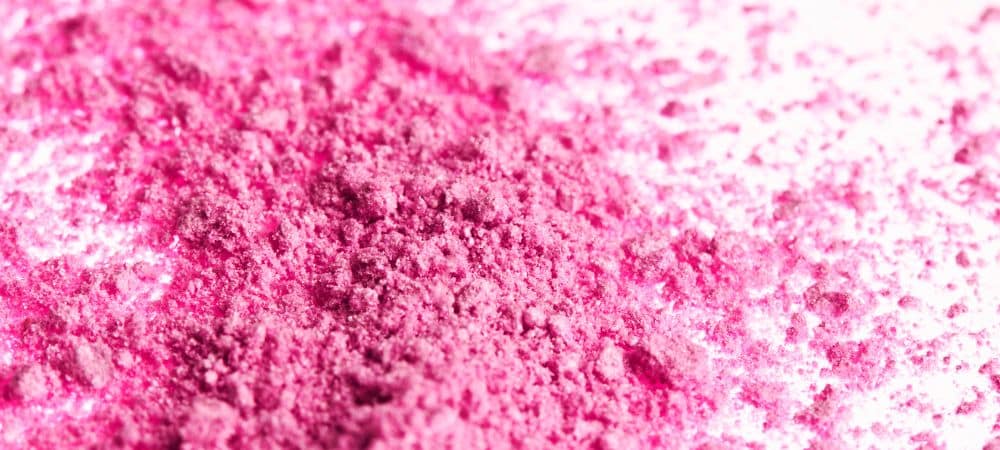Methamphetamine is a potent and highly addictive illicit stimulant drug. People who abuse meth for even short periods may quickly develop an addiction to it. It can be very challenging to overcome meth addiction, and many people require intensive treatment to quit.
There are many forms and types of meth available, including several colors. Drug dealers may market colored crystal meth differently. While the color of meth doesn’t impact its side effects, dealers may attempt to convince people colored or flavored meth is more potent.
Pink-colored meth made headlines in the early 2000s as part of a hoax. While the myth of strawberry-flavored meth turned out to be imaginary, dealers today may market pink meth as a more potent form of the drug.
This article will explore pink meth. You’ll learn:
- The facts behind the “strawberry quick meth” hoax
- What pink meth is
- The side effects and risks of meth abuse
- How to identify meth addiction
- What happens in meth addiction treatment
- Where to find treatment and recovery support
If you or someone you love struggles with meth abuse or addiction, you are not alone. Using any form of meth increases your risk of addiction and other life-threatening problems. Find holistic substance abuse treatment and support at The Living Room. Contact our intake team to learn about our programs or to schedule an intake appointment.
Strawberry Meth: Fact or Fiction?
Around 2007, the “strawberry quick meth” myth spread throughout the United States. The media reported stories about drug dealers who tried to lure children into meth abuse by dyeing it pink and adding strawberry flavoring. The stories indicated that the resulting meth looked and tasted like pop rocks, which were meant to be appealing to children.
In truth, strawberry meth was just a myth. The National Institute on Drug Abuse (NIDA) and law enforcement agencies debunked these claims, reassuring frightened parents that there was no cause for alarm.
What is Pink Meth?
While the myth of strawberry meth may have disappeared, pink meth still exists. Crystal methamphetamine comes in many colors, including blue, yellow, and pink.
But why is some meth pink?
There are several reasons this illicit drug may be pink. These include:
- The meth is derived from Sudafed, an over-the-counter medication that is available in red tablets
- The dealers made meth using anhydrous ammonia treated with a theft-deterrent chemical called GloTell, which can turn it red
- The dealer added red dye to the meth during production
Some dealers attempt to convince people that specific colors of meth are more potent than others. However, the Drug Enforcement Administration (DEA) says there is no difference in purity between different colors of methamphetamine.
What are the Effects and Risks of Pink Meth?
Pink meth has the same effects and risks as other colors of the drug. All meth abuse can lead to addiction and other severe health problems.
Some of the immediate effects of methamphetamine use include:
- Euphoria
- Increased energy
- Rapid heart rate
- Elevated blood pressure
- Loss of appetite
- Hallucinations
- Delusions
- Loss of coordination
- Paranoia
- Mood swings
- Aggression
- Violent behaviors
- Anxiety
- Memory problems
People who abuse meth can quickly develop an addiction to it. Over time, meth abuse can cause serious problems, including:
- Severe skin infections
- Tooth decay and dental issues
- Lung damage
- Extreme weight loss and malnutrition
- Severe sinus and nasal passage damage
It is crucial to seek treatment for meth addiction as soon as you recognize it. Without treatment, meth addiction can worsen and become life-threatening.
Signs of Meth Addiction
Meth abuse changes the way a person thinks, feels, looks, and behaves. It can be challenging to overcome meth addiction, but getting help as soon as possible can help people quit safely and avoid relapse.
Some of the signs of meth addiction include:
- Quick, dramatic weight loss
- Increased energy
- Aggressive or erratic behaviors
- Hallucinations or delusional thinking
- Agitation
- Mood swings
- Irritability
- Scratching or picking at the skin
People with meth addiction may also have social and behavioral changes related to meth addiction, including:
- Increased isolation
- Legal or financial problems related to meth use
- Spending a lot of time getting and using meth
- Neglecting their responsibilities, relationships, and hobbies
- Not taking care of themselves (showering, cleaning, cooking, wearing clean clothing, etc.)
People who become addicted to meth typically cannot simply choose to stop using it. Many need comprehensive, intensive treatment to quit and to avoid relapse.
What to Expect From Meth Addiction Treatment
Meth addiction treatment includes evidence-based therapies for the physical, emotional, and behavioral aspects of substance abuse. A meth addiction treatment program might include:
- A medically-supported detox program
- Medications and medical care
- Round-the-clock supervision and support
- Behavioral therapies
- Individual, family, and group therapy
- Relapse prevention education
- Holistic therapies like exercise, mindfulness, and nutrition support
- Aftercare planning
Depending on their needs, people may attend inpatient treatment or outpatient rehab programs. Many people with meth addiction require inpatient care during detox, followed by intensive ongoing support.
Find Treatment Now
Meth abuse is dangerous for your health and well-being. If you or a loved one struggles with meth abuse or addiction, find compassionate treatment and support at The Living Room. Contact our intake specialists to learn about our programs or to schedule an intake appointment.
References:
- United States Drug Enforcement Administration (DEA): Methamphetamine
- National Institute of Health (NIH): The Color of Meth: Is it Related to Adverse Health Outcomes? An Exploratory Study in Tijuana, Mexico
- Centers for Disease Control and Prevention (CDC): Patterns and Characteristics of Methamphetamine Use Among Adults — United States, 2015–2018


